Java: Try lossless and fallback to content-aware
(Best lossless result so far!)
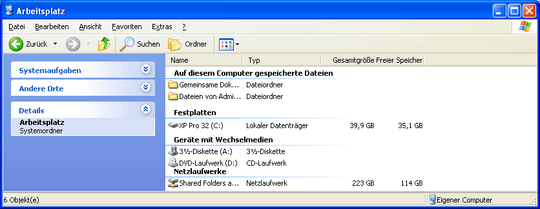
When I first looked at this question I thought this is not a puzzle or challenge just someone desperately in need of a program and it's code ;) But it is in my nature to solve vision problems so I could not stop my self from trying this challenge!
I came up with the following approach and combination of algorithms.
In pseudo-code it looks like this:
function crop(image, desired) {
int sizeChange = 1;
while(sizeChange != 0 and image.width > desired){
Look for a repeating and connected set of lines (top to bottom) with a minimum of x lines
Remove all the lines except for one
sizeChange = image.width - newImage.width
image = newImage;
}
if(image.width > desired){
while(image.width > 2 and image.width > desired){
Create a "pixel energy" map of the image
Find the path from the top of the image to the bottom which "costs" the least amount of "energy"
Remove the lowest cost path from the image
image = newImage;
}
}
}
int desiredWidth = ?
int desiredHeight = ?
Image image = input;
crop(image, desiredWidth);
rotate(image, 90);
crop(image, desiredWidth);
rotate(image, -90);
Used techniques:
- Intensity grayscale
- Dilation
- Equal column search and remove
- Seam-carving
- Sobel edge detection
- Thresholding
The Program
The program can crop screenshots lossless but has an option to fallback to content-aware cropping which is not 100% lossless. The arguments of the program can be tweaked to achieve better results.
Note: The program can be improved in many ways (I don't have that much spare time!)
Arguments
File name = file
Desired width = number > 0
Desired height = number > 0
Min slice width = number > 1
Compare threshold = number > 0
Use content aware = boolean
Max content aware cycles = number >= 0
Code
import java.awt.Graphics2D;
import java.awt.image.BufferedImage;
import java.awt.image.ColorModel;
import java.io.File;
import java.io.IOException;
import javax.imageio.ImageIO;
import javax.swing.ImageIcon;
import javax.swing.JLabel;
import javax.swing.JOptionPane;
/**
* @author Rolf Smit
* Share and adapt as you like, but don't forget to credit the author!
*/
public class MagicWindowCropper {
public static void main(String[] args) {
if(args.length != 7){
throw new IllegalArgumentException("At least 7 arguments are required: (file, desiredWidth, desiredHeight, minSliceSize, sliceThreshold, forceRemove, maxForceRemove)!");
}
File file = new File(args[0]);
int minSliceSize = Integer.parseInt(args[3]); //4;
int desiredWidth = Integer.parseInt(args[1]); //400;
int desiredHeight = Integer.parseInt(args[2]); //400;
boolean forceRemove = Boolean.parseBoolean(args[5]); //true
int maxForceRemove = Integer.parseInt(args[6]); //40
MagicWindowCropper.MATCH_THRESHOLD = Integer.parseInt(args[4]); //3;
try {
BufferedImage result = ImageIO.read(file);
System.out.println("Horizontal cropping");
//Horizontal crop
result = doDuplicateColumnsMagic(result, minSliceSize, desiredWidth);
if (result.getWidth() != desiredWidth && forceRemove) {
result = doSeamCarvingMagic(result, maxForceRemove, desiredWidth);
}
result = getRotatedBufferedImage(result, false);
System.out.println("Vertical cropping");
//Vertical crop
result = doDuplicateColumnsMagic(result, minSliceSize, desiredHeight);
if (result.getWidth() != desiredHeight && forceRemove) {
result = doSeamCarvingMagic(result, maxForceRemove, desiredHeight);
}
result = getRotatedBufferedImage(result, true);
showBufferedImage("Result", result);
ImageIO.write(result, "png", getNewFileName(file));
} catch (IOException e) {
e.printStackTrace();
}
}
private static BufferedImage doSeamCarvingMagic(BufferedImage inputImage, int max, int desired) {
System.out.println("Seam Carving magic:");
int maxChange = Math.min(inputImage.getWidth() - desired, max);
BufferedImage last = inputImage;
int total = 0, change;
do {
int[][] energy = getPixelEnergyImage(last);
BufferedImage out = removeLowestSeam(energy, last);
change = last.getWidth() - out.getWidth();
total += change;
System.out.println("Carves removed: " + total);
last = out;
} while (change != 0 && total < maxChange);
return last;
}
private static BufferedImage doDuplicateColumnsMagic(BufferedImage inputImage, int minSliceWidth, int desired) {
System.out.println("Duplicate columns magic:");
int maxChange = inputImage.getWidth() - desired;
BufferedImage last = inputImage;
int total = 0, change;
do {
BufferedImage out = removeDuplicateColumn(last, minSliceWidth, desired);
change = last.getWidth() - out.getWidth();
total += change;
System.out.println("Columns removed: " + total);
last = out;
} while (change != 0 && total < maxChange);
return last;
}
/*
* Duplicate column methods
*/
private static BufferedImage removeDuplicateColumn(BufferedImage inputImage, int minSliceWidth, int desiredWidth) {
if (inputImage.getWidth() <= minSliceWidth) {
throw new IllegalStateException("The image width is smaller than the minSliceWidth! What on earth are you trying to do?!");
}
int[] stamp = null;
int sliceStart = -1, sliceEnd = -1;
for (int x = 0; x < inputImage.getWidth() - minSliceWidth + 1; x++) {
stamp = getHorizontalSliceStamp(inputImage, x, minSliceWidth);
if (stamp != null) {
sliceStart = x;
sliceEnd = x + minSliceWidth - 1;
break;
}
}
if (stamp == null) {
return inputImage;
}
BufferedImage out = deepCopyImage(inputImage);
for (int x = sliceEnd + 1; x < inputImage.getWidth(); x++) {
int[] row = getHorizontalSliceStamp(inputImage, x, 1);
if (equalsRows(stamp, row)) {
sliceEnd = x;
} else {
break;
}
}
//Remove policy
int canRemove = sliceEnd - (sliceStart + 1) + 1;
int mayRemove = inputImage.getWidth() - desiredWidth;
int dif = mayRemove - canRemove;
if (dif < 0) {
sliceEnd += dif;
}
int mustRemove = sliceEnd - (sliceStart + 1) + 1;
if (mustRemove <= 0) {
return out;
}
out = removeHorizontalRegion(out, sliceStart + 1, sliceEnd);
out = removeLeft(out, out.getWidth() - mustRemove);
return out;
}
private static BufferedImage removeHorizontalRegion(BufferedImage image, int startX, int endX) {
int width = endX - startX + 1;
if (endX + 1 > image.getWidth()) {
endX = image.getWidth() - 1;
}
if (endX < startX) {
throw new IllegalStateException("Invalid removal parameters! Wow this error message is genius!");
}
BufferedImage out = deepCopyImage(image);
for (int x = endX + 1; x < image.getWidth(); x++) {
for (int y = 0; y < image.getHeight(); y++) {
out.setRGB(x - width, y, image.getRGB(x, y));
out.setRGB(x, y, 0xFF000000);
}
}
return out;
}
private static int[] getHorizontalSliceStamp(BufferedImage inputImage, int startX, int sliceWidth) {
int[] initial = new int[inputImage.getHeight()];
for (int y = 0; y < inputImage.getHeight(); y++) {
initial[y] = inputImage.getRGB(startX, y);
}
if (sliceWidth == 1) {
return initial;
}
for (int s = 1; s < sliceWidth; s++) {
int[] row = new int[inputImage.getHeight()];
for (int y = 0; y < inputImage.getHeight(); y++) {
row[y] = inputImage.getRGB(startX + s, y);
}
if (!equalsRows(initial, row)) {
return null;
}
}
return initial;
}
private static int MATCH_THRESHOLD = 3;
private static boolean equalsRows(int[] left, int[] right) {
for (int i = 0; i < left.length; i++) {
int rl = (left[i]) & 0xFF;
int gl = (left[i] >> 8) & 0xFF;
int bl = (left[i] >> 16) & 0xFF;
int rr = (right[i]) & 0xFF;
int gr = (right[i] >> 8) & 0xFF;
int br = (right[i] >> 16) & 0xFF;
if (Math.abs(rl - rr) > MATCH_THRESHOLD
|| Math.abs(gl - gr) > MATCH_THRESHOLD
|| Math.abs(bl - br) > MATCH_THRESHOLD) {
return false;
}
}
return true;
}
/*
* Seam carving methods
*/
private static BufferedImage removeLowestSeam(int[][] input, BufferedImage image) {
int lowestValue = Integer.MAX_VALUE; //Integer overflow possible when image height grows!
int lowestValueX = -1;
// Here be dragons
for (int x = 1; x < input.length - 1; x++) {
int seamX = x;
int value = input[x][0];
for (int y = 1; y < input[x].length; y++) {
if (seamX < 1) {
int top = input[seamX][y];
int right = input[seamX + 1][y];
if (top <= right) {
value += top;
} else {
seamX++;
value += right;
}
} else if (seamX > input.length - 2) {
int top = input[seamX][y];
int left = input[seamX - 1][y];
if (top <= left) {
value += top;
} else {
seamX--;
value += left;
}
} else {
int left = input[seamX - 1][y];
int top = input[seamX][y];
int right = input[seamX + 1][y];
if (top <= left && top <= right) {
value += top;
} else if (left <= top && left <= right) {
seamX--;
value += left;
} else {
seamX++;
value += right;
}
}
}
if (value < lowestValue) {
lowestValue = value;
lowestValueX = x;
}
}
BufferedImage out = deepCopyImage(image);
int seamX = lowestValueX;
shiftRow(out, seamX, 0);
for (int y = 1; y < input[seamX].length; y++) {
if (seamX < 1) {
int top = input[seamX][y];
int right = input[seamX + 1][y];
if (top <= right) {
shiftRow(out, seamX, y);
} else {
seamX++;
shiftRow(out, seamX, y);
}
} else if (seamX > input.length - 2) {
int top = input[seamX][y];
int left = input[seamX - 1][y];
if (top <= left) {
shiftRow(out, seamX, y);
} else {
seamX--;
shiftRow(out, seamX, y);
}
} else {
int left = input[seamX - 1][y];
int top = input[seamX][y];
int right = input[seamX + 1][y];
if (top <= left && top <= right) {
shiftRow(out, seamX, y);
} else if (left <= top && left <= right) {
seamX--;
shiftRow(out, seamX, y);
} else {
seamX++;
shiftRow(out, seamX, y);
}
}
}
return removeLeft(out, out.getWidth() - 1);
}
private static void shiftRow(BufferedImage image, int startX, int y) {
for (int x = startX; x < image.getWidth() - 1; x++) {
image.setRGB(x, y, image.getRGB(x + 1, y));
}
}
private static int[][] getPixelEnergyImage(BufferedImage image) {
// Convert Image to gray scale using the luminosity method and add extra
// edges for the Sobel filter
int[][] grayScale = new int[image.getWidth() + 2][image.getHeight() + 2];
for (int x = 0; x < image.getWidth(); x++) {
for (int y = 0; y < image.getHeight(); y++) {
int rgb = image.getRGB(x, y);
int r = (rgb >> 16) & 0xFF;
int g = (rgb >> 8) & 0xFF;
int b = (rgb & 0xFF);
int luminosity = (int) (0.21 * r + 0.72 * g + 0.07 * b);
grayScale[x + 1][y + 1] = luminosity;
}
}
// Sobel edge detection
final double[] kernelHorizontalEdges = new double[] { 1, 2, 1, 0, 0, 0, -1, -2, -1 };
final double[] kernelVerticalEdges = new double[] { 1, 0, -1, 2, 0, -2, 1, 0, -1 };
int[][] energyImage = new int[image.getWidth()][image.getHeight()];
for (int x = 1; x < image.getWidth() + 1; x++) {
for (int y = 1; y < image.getHeight() + 1; y++) {
int k = 0;
double horizontal = 0;
for (int ky = -1; ky < 2; ky++) {
for (int kx = -1; kx < 2; kx++) {
horizontal += ((double) grayScale[x + kx][y + ky] * kernelHorizontalEdges[k]);
k++;
}
}
double vertical = 0;
k = 0;
for (int ky = -1; ky < 2; ky++) {
for (int kx = -1; kx < 2; kx++) {
vertical += ((double) grayScale[x + kx][y + ky] * kernelVerticalEdges[k]);
k++;
}
}
if (Math.sqrt(horizontal * horizontal + vertical * vertical) > 127) {
energyImage[x - 1][y - 1] = 255;
} else {
energyImage[x - 1][y - 1] = 0;
}
}
}
//Dilate the edge detected image a few times for better seaming results
//Current value is just 1...
for (int i = 0; i < 1; i++) {
dilateImage(energyImage);
}
return energyImage;
}
private static void dilateImage(int[][] image) {
for (int x = 0; x < image.length; x++) {
for (int y = 0; y < image[x].length; y++) {
if (image[x][y] == 255) {
if (x > 0 && image[x - 1][y] == 0) {
image[x - 1][y] = 2; //Note: 2 is just a placeholder value
}
if (y > 0 && image[x][y - 1] == 0) {
image[x][y - 1] = 2;
}
if (x + 1 < image.length && image[x + 1][y] == 0) {
image[x + 1][y] = 2;
}
if (y + 1 < image[x].length && image[x][y + 1] == 0) {
image[x][y + 1] = 2;
}
}
}
}
for (int x = 0; x < image.length; x++) {
for (int y = 0; y < image[x].length; y++) {
if (image[x][y] == 2) {
image[x][y] = 255;
}
}
}
}
/*
* Utilities
*/
private static void showBufferedImage(String windowTitle, BufferedImage image) {
JOptionPane.showMessageDialog(null, new JLabel(new ImageIcon(image)), windowTitle, JOptionPane.PLAIN_MESSAGE, null);
}
private static BufferedImage deepCopyImage(BufferedImage input) {
ColorModel cm = input.getColorModel();
return new BufferedImage(cm, input.copyData(null), cm.isAlphaPremultiplied(), null);
}
private static final BufferedImage getRotatedBufferedImage(BufferedImage img, boolean back) {
double oldW = img.getWidth(), oldH = img.getHeight();
double newW = img.getHeight(), newH = img.getWidth();
BufferedImage out = new BufferedImage((int) newW, (int) newH, img.getType());
Graphics2D g = out.createGraphics();
g.translate((newW - oldW) / 2.0, (newH - oldH) / 2.0);
g.rotate(Math.toRadians(back ? -90 : 90), oldW / 2.0, oldH / 2.0);
g.drawRenderedImage(img, null);
g.dispose();
return out;
}
private static BufferedImage removeLeft(BufferedImage image, int startX) {
int removeWidth = image.getWidth() - startX;
BufferedImage out = new BufferedImage(image.getWidth() - removeWidth,
image.getHeight(), image.getType());
for (int x = 0; x < startX; x++) {
for (int y = 0; y < out.getHeight(); y++) {
out.setRGB(x, y, image.getRGB(x, y));
}
}
return out;
}
private static File getNewFileName(File in) {
String name = in.getName();
int i = name.lastIndexOf(".");
if (i != -1) {
String ext = name.substring(i);
String n = name.substring(0, i);
return new File(in.getParentFile(), n + "-cropped" + ext);
} else {
return new File(in.getParentFile(), name + "-cropped");
}
}
}
Results
XP screenshot lossless without desired size (Max lossless compression)
Arguments: "image.png" 1 1 5 10 false 0
Result: 836 x 323

XP screenshot to 800x600
Arguments: "image.png" 800 600 6 10 true 60
Result: 800 x 600
The lossless algorithm removes about 155 horizontal lines than the algorithm falls back to content-aware removal therefor some artifacts can be seen.
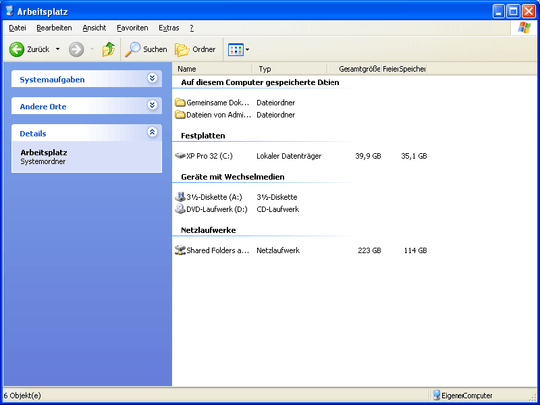
Windows 10 screenshot to 700x300
Arguments: "image.png" 700 300 6 10 true 60
Result: 700 x 300
The lossless algorithm removes 270 horizontal lines than the algorithm falls back to content-aware removal which removes another 29. Vertical only the lossless algorithm is used.
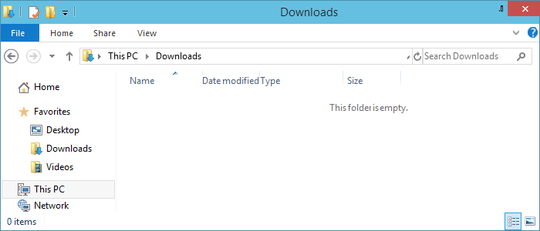
Windows 10 screenshot content-aware to 400x200 (test)
Arguments: "image.png" 400 200 5 10 true 600
Result: 400 x 200
This was a test to see how the resulting image would look after severe use of the content-aware feature. The result is heavily damaged but not unrecognizable.
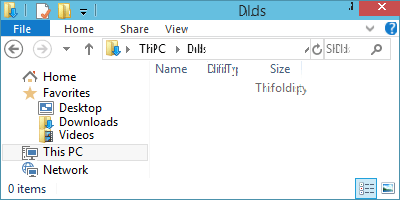
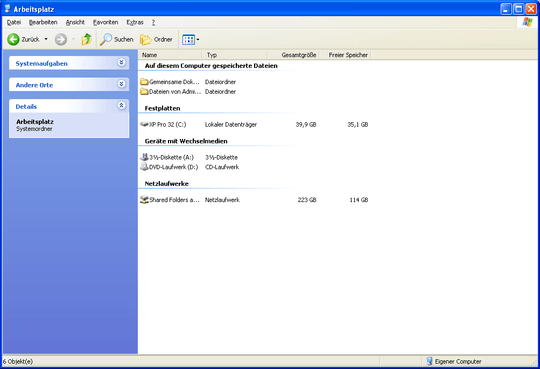
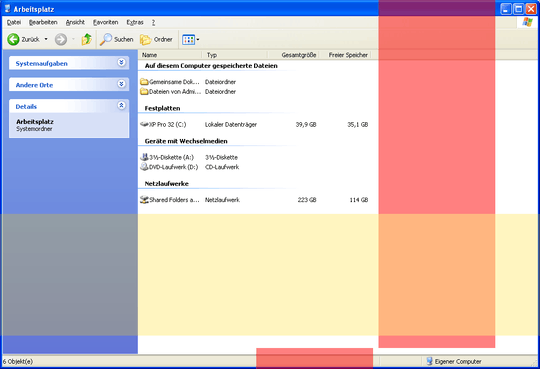


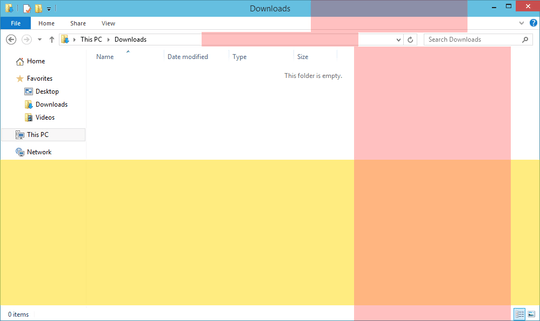
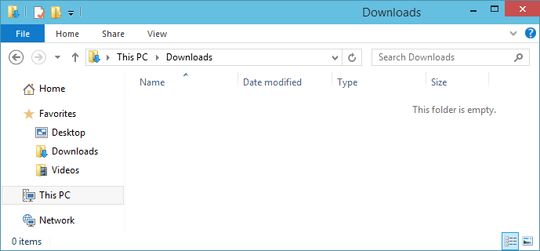
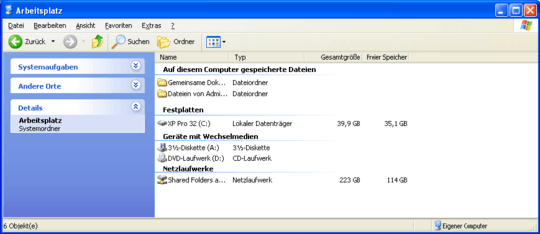

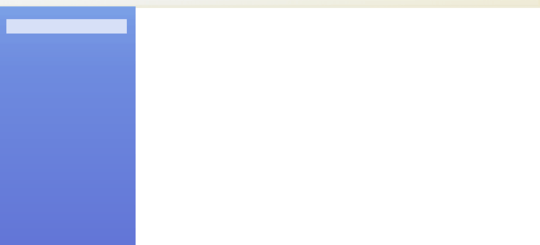

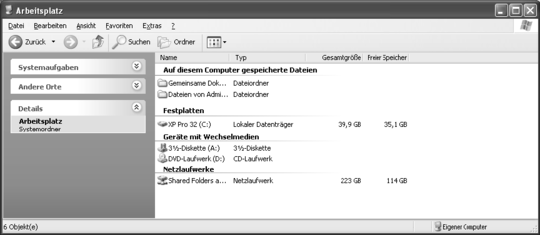





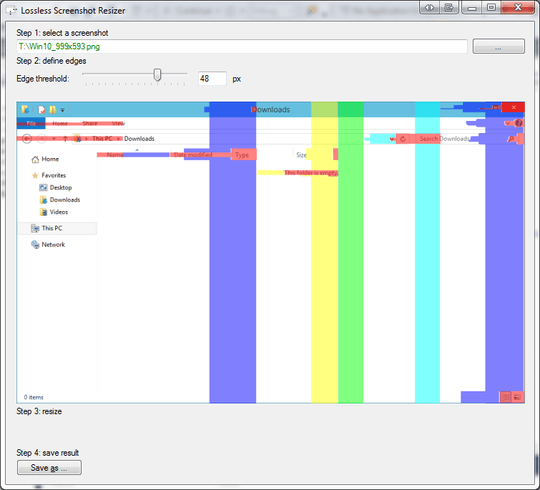



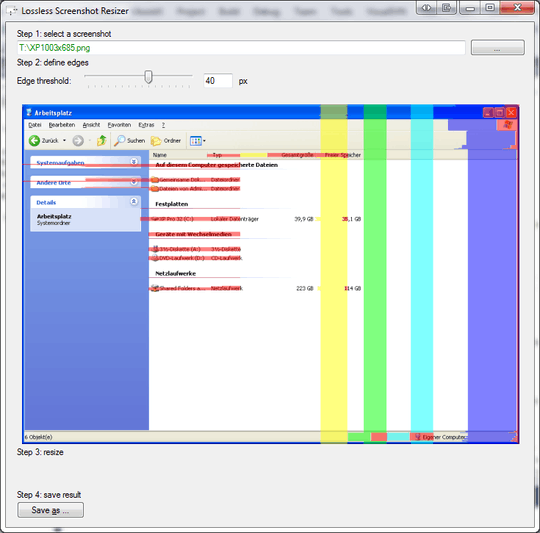
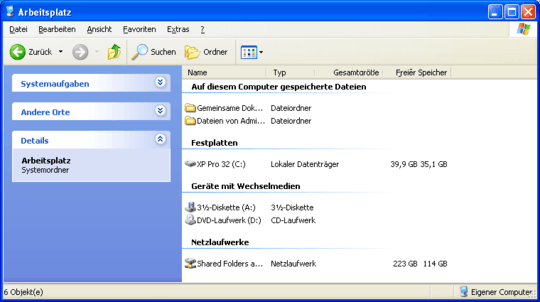
3
Reminds me of Photoshop's "content aware scaling" feature.
– agtoever – 2015-02-22T06:13:50.903What format is the input. Can we chose any standard image format? – HEGX64 – 2015-02-22T07:59:52.027
@ThomasW said "I guess this one is rather boring". Not true. This is diabolical. – Logic Knight – 2015-02-22T09:14:58.250
@CarpetPython it has 17 upvotes and no downvotes, so I guess not everyone shares your view. – Level River St – 2015-02-22T10:08:55.230
Does it also need to upscale images? Re-size can be both up and down. – Rolf ツ – 2015-02-22T10:37:13.140
If not consider changing the name to "Sometimes I need a lossless screenshot cropper. – Rolf ツ – 2015-02-22T12:01:09.980
@steveverrill, I meant that it is is very good challenge. It is non-trivial. – Logic Knight – 2015-02-22T14:59:36.117
@HEGX64: Usually I use PNG because it does not have compression artifacts. But any other format is fine as well. – Thomas Weller – 2015-02-22T17:42:45.223
@Rolfツ: I seldom need to upscale images. But indeed, for my blog I usually take 800x600 pixels, so I upscale some of them. – Thomas Weller – 2015-02-22T17:44:00.487
1This question does not receive enough attention, the first answer has been upvoted because it was the only answer for a long time. The amount of votes is at the moment not enough to represent the popularity of the different answers. The question is how can we get more people to vote? Even I voted on a answer. – Rolf ツ – 2015-02-24T17:06:21.510
@Rolfツ: I agree. Also, your answer matches best the requirements like specifying the output size etc. I intend to place a bounty on the question, but wait until Friday, because developing solutions is not so trivial and give others the chance to benefit from the bounty as well. – Thomas Weller – 2015-02-24T17:45:34.503
1@Rolfツ: I have started a bounty worth 2/3 of the reputation I have earned from this question so far. I hope that is fair enough. – Thomas Weller – 2015-02-26T20:40:11.047
Pff hope that it will do some good! – Rolf ツ – 2015-02-26T20:41:24.250
I have awarded the bounty to @Rolfツ, because that answer fulfills the requirements best. I would have liked to see more answers though, because the algorithms are very different. Thanks for anyone participating and upvoting the question so that the bounty was possible. – Thomas Weller – 2015-03-04T22:17:27.520